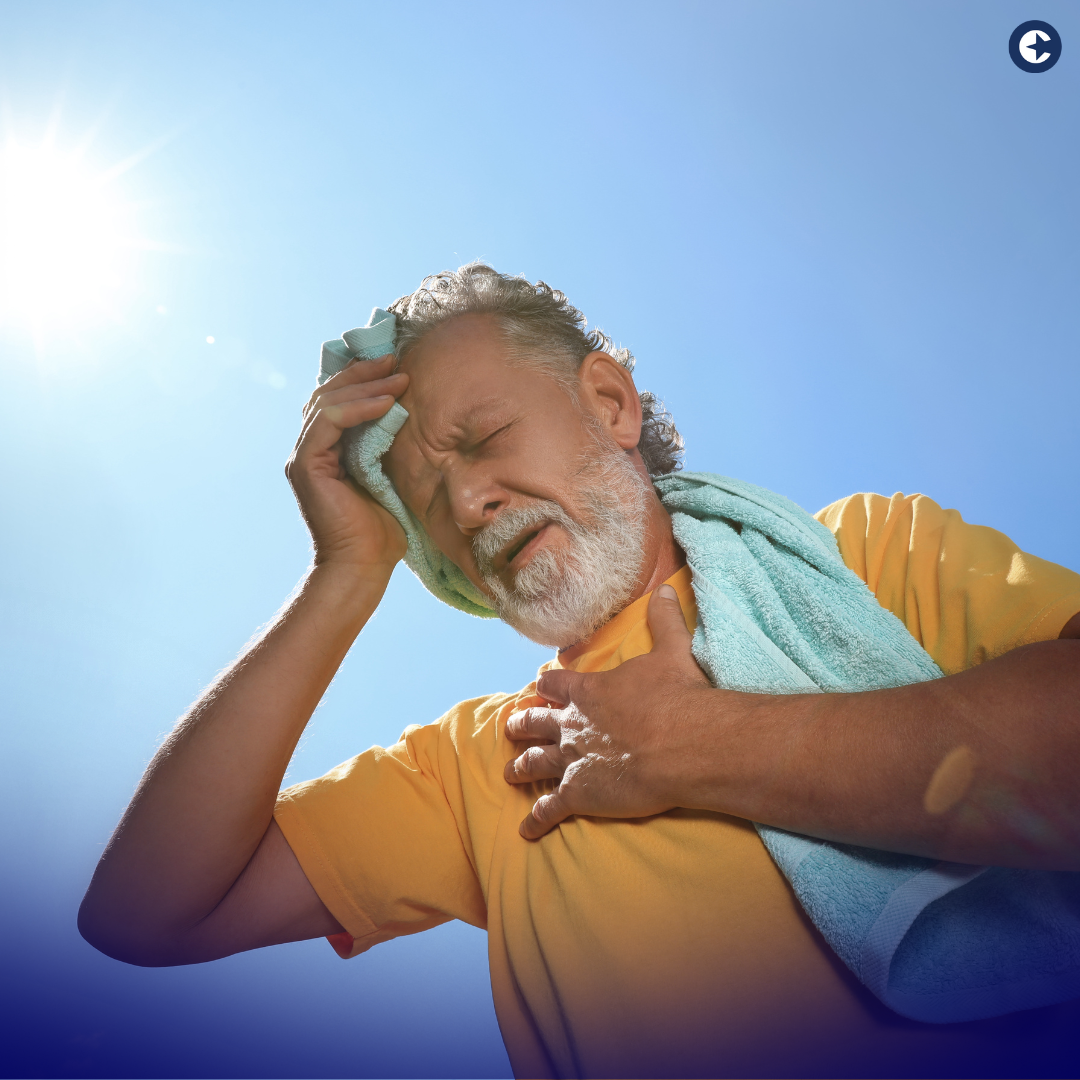Heat stroke is a serious and potentially life-threatening condition that occurs when the body’s temperature regulation system fails due to excessive heat exposure. As global temperatures continue to rise, the risk of heat stroke becomes a significant concern, especially during the hot summer months. This blog explores ways to prevent heat stroke and the long-term effects it can have on your health.
Understanding Heat Stroke
What is Heat Stroke? Heat stroke occurs when the body’s core temperature rises to 104°F (40°C) or higher due to prolonged exposure to high temperatures or physical exertion in hot weather. It is a medical emergency that requires immediate attention.
Symptoms of Heat Stroke:
- High body temperature (104°F or higher)
- Altered mental state or behavior (confusion, agitation, slurred speech)
- Nausea and vomiting
- Flushed skin
- Rapid breathing and heart rate
- Headache
- Muscle weakness or cramps
- Absence of sweating despite the heat
Preventing Heat Stroke
Preventing heat stroke involves taking proactive measures to stay cool and hydrated, especially during extreme heat conditions. Here are some essential tips to prevent heat stroke:
- Stay Hydrated
- Drink Plenty of Fluids: Drink water frequently, even if you don’t feel thirsty. Avoid drinks with caffeine, alcohol, or high sugar content, as they can dehydrate you.
- Electrolyte Replacement: Consume sports drinks or electrolyte supplements if you are engaging in strenuous activities or sweating excessively.
- Dress Appropriately
- Wear Lightweight Clothing: Choose loose-fitting, light-colored, and breathable fabrics like cotton.
- Protect Your Head: Wear a wide-brimmed hat or use an umbrella to shield yourself from the sun.
- Limit Sun Exposure
- Avoid Peak Sun Hours: Try to stay indoors during the hottest parts of the day, typically between 10 a.m. and 4 p.m.
- Seek Shade: If you need to be outside, find shaded areas to reduce direct sun exposure.
- Use Cooling Measures
- Take Cool Showers or Baths: Cool down with a refreshing shower or bath.
- Use Fans and Air Conditioning: Utilize fans, air conditioning, or portable coolers to maintain a comfortable indoor temperature.
- Cool Packs: Apply ice packs or cool cloths to pulse points like your wrists, neck, and forehead.
- Plan Outdoor Activities Wisely
- Exercise Caution: Schedule physical activities during cooler parts of the day, such as early morning or late evening.
- Gradual Acclimatization: Gradually increase your exposure to high temperatures to allow your body to acclimatize.
- Monitor Vulnerable Individuals
- Check on At-Risk People: Keep an eye on young children, the elderly, and those with chronic illnesses, as they are more susceptible to heat-related illnesses.
- Buddy System: Use a buddy system during outdoor activities to watch for signs of heat-related stress in each other.
Long-Term Effects of Heat Stroke
While immediate treatment can often mitigate the acute symptoms of heat stroke, the condition can have lasting effects on health. Here are some potential long-term consequences:
- Chronic Kidney Damage
- Dehydration and Rhabdomyolysis: Severe dehydration and muscle breakdown (rhabdomyolysis) during heat stroke can damage the kidneys, potentially leading to chronic kidney disease.
- Neurological Damage
- Cognitive Impairment: Heat stroke can cause long-term cognitive issues such as memory loss, difficulty concentrating, and changes in behavior or personality.
- Motor Function: There may be lasting impacts on motor skills and coordination.
- Cardiovascular Issues
- Heart Problems: The stress of heat stroke on the cardiovascular system can lead to long-term heart issues, including an increased risk of heart attack and stroke.
- Heat Sensitivity
- Increased Susceptibility: After experiencing heat stroke, individuals may become more sensitive to heat and more prone to future episodes of heat-related illnesses.
- Organ Damage
- Liver and Muscle Damage: Heat stroke can cause significant damage to internal organs, including the liver and muscles, which can have long-term health implications.
- Psychological Effects
- Post-Traumatic Stress: Experiencing a severe heat stroke can lead to psychological effects such as anxiety, depression, and post-traumatic stress disorder (PTSD).
Conclusion
Preventing heat stroke requires awareness and proactive measures, especially during hot weather. Staying hydrated, wearing appropriate clothing, limiting sun exposure, and using cooling techniques are essential steps to prevent heat stroke. Understanding the long-term effects of heat stroke underscores the importance of prevention and timely treatment. By taking these precautions, you can protect yourself and others from the dangers of heat stroke and maintain good health during the hot summer months.
For more follow us on Instagram, Facebook, Twitter, & LinkedIn.


